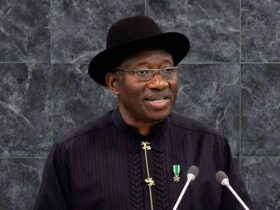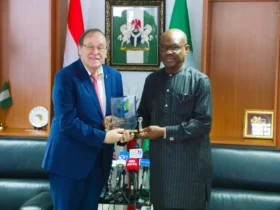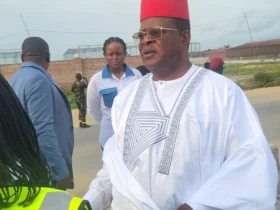Nigerian Institute of Architects (NIA), Kaduna State chapter, is set to begin an investigation over the immediate and remote causes of the Zaria Central Mosque collapse.
The committee is made up of senior members of the institute from the private sector, academia, and government agencies.
It was learned that the mosque which collapsed and killed 12 worshippers, injuring many others, penultimate Friday, was built around the 1820s by local builders.
Addressing a press conference, yesterday, the Chairman of, Kaduna State chapter of NIA, Samuel Obaje, said following the incident, the institute constituted a delegation that paid a condolence visit to the Emir of Zazzau, Ahmed Bamali, and also undertook a preliminary inspection of the collapsed portion of the Mosque with a view to identifying the immediate and remote causes.
He said preliminary investigation based on assumption showed that the Mosque collapse due to wear and tear as well as heavy water lodged in the mud roof section of the building, among other factors.
“You will agree with me that these assumptions are however speculative and can only be authenticated by a thorough forensic investigation of the building with a view to ascertaining the actual cause of the collapse of the building.”
He said the NIA chapter would at the end of the committee’s finding come up with a resolution on the way forward with a view to restoring the building to normal use.
“It is instructive to note that this Mosque is a historical monument that has been in existence for about 200 years having been constructed around 1820 by the Babban Gwani (Chief Builder) during the reign of Emir Jafaru and has experienced rehabilitation and maintenance at various times, including the recent upgrade and expansion of the mosque to accommodate more worshippers.
“The materials used during the construction of the Mosque are primarily mud (Tubali),straws as stabilizing mixture and palm stalks (AZARA)as reinforcements to strengthen the constructed elements of domed roofs and piers (columns), while mural finishing touches were made on the surfaces to enhance the beauty of the facades which is still being maintained as at the time of the collapse incidence.”
Obaje, however, added that in the interim, it was advised that, “for safety purposes, the entire area of the old mosque should be completely sealed off from the public while the New extension can be demarcated and opened for normal worshiping activities.”
READ ALSO: Four killed, five injured as Zaria Central Mosque collapses










Leave a Reply